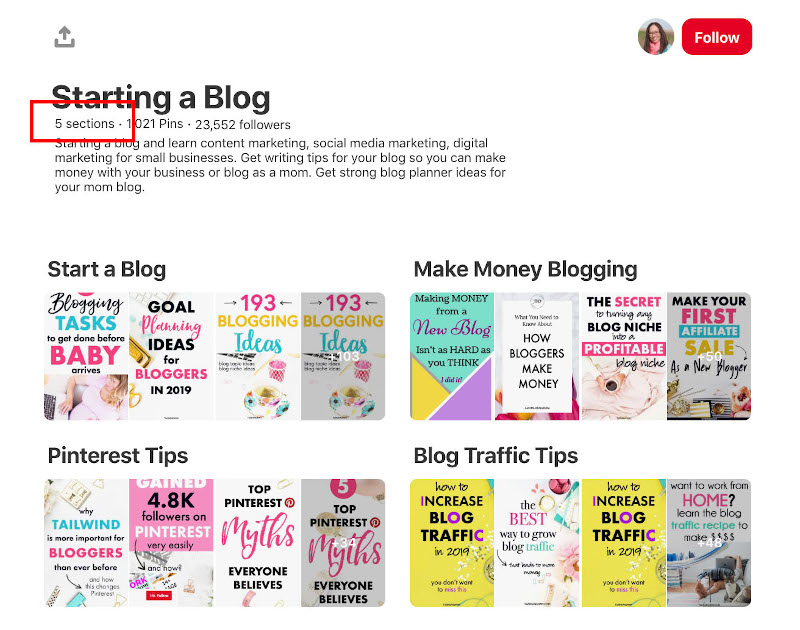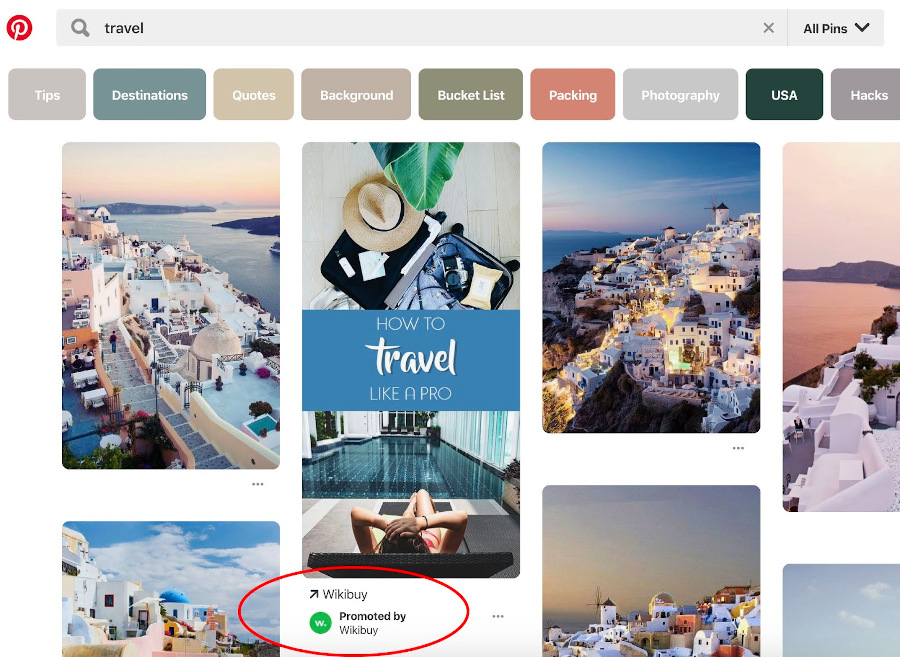In 2019, Pinterest gained 70 million active users, bringing the total number of Pinterest users up to 335 million. More than half of that number use the platform on a weekly basis.
It makes sense, then, why you want to increase your followers on Pinterest. The popularity of the platform makes it a good site to increase brand awareness — additionally, Pinterest users are particularly receptive to branded content. In fact, 75% of Pinterest users said they were open to discovering new products and ideas (which is significantly higher than other digital platforms).
But the popularity of Pinterest means it's a crowded space, and the task of increasing followers can feel daunting. You might even be tempted to buy Pinterest followers — we'll explain how to do this later (and why it's a bad idea).
Fortunately, there are tactics you can implement right now to increase your real follower count on Pinterest. Here, we're going to dive into everything you need to know to grow your Pinterest audience today.
How to Get Followers on Pinterest
- Focus on a specific audience.
- Post original images.
- Create a cohesive brand for recognition on the platform.
- Post infographics to promote proprietary data for your company.
- Use keywords and hashtags.
- Include relevant keywords in your Pinterest name, too.
- Be active and engaged on Pinterest.
- Follow other users.
- Add a Pinterest follow button to your newsletter or website.
- Use Pinterest sections.
- Promote your pins.
- A/B test your pins to see what works.
1. Focus on a specific audience.
Even if your products or services could, in theory, be purchased by anyone, you should laser focus your Pinterest marketing strategy. You'll find that as you narrow your target, the better you'll be able to create content that actually resonates with them. By identifying a niche and dominating it, you can expand your reach as your content is consumed, shared, and recognized.
Creating a buyer persona is the first step to defining your audience, humanizing them, and understanding their needs.
2. Post original images.
84% of Pinners use Pinterest to decide what to buy — which means it's critical you position yourself in front of them by creating original content for your brand. Try posting original infographics, graphics, or photos that reflect your brand's message. Additionally, when you do re-pin, make sure you're re-pinning content that aligns well with your own brand.
3. Create a cohesive brand for recognition on the platform.
People do business with those they like, know, and trust, so the goal is to go from a stranger in your prospects' eyes to being known and trusted. On Pinterest, that means increasing the number of impressions your content earns from your target audience. An "impression" refers to any time a prospect "sees" you or your brand. If you don't have a consistent look and feel, your content won't be recognized as being related, which means you never build that trust.
According to Forbes, color improves brand recognition by up to 80%, and consistent brand presentation across platforms increases revenue by up to 23%. The big take-away is that a consistent (and recognizable) brand identity is paramount to increasing ROI for your Pinterest marketing efforts. By building a brand identity, your target audience will start to recognize you in the niche, which is the first step to building trust.
4. Post infographics to promote proprietary data for your company.
Infographics are a perfect mix of data, visual, and written content, making them extremely shareable. For this reason, 40% of marketers reported that infographics were the type of visual content that helped them reach their marketing goals in 2019 according to Venngage.
Infographics do well on Pinterest, particularly, as it's a visual platform with the capability of displaying long, vertical images. By creating a custom-branded infographic and sharing it on Pinterest, you're establishing credibility by educating your audience. It also gives another opportunity for "impressions" to increase your brand recognition if the infographic is branded properly.
5. Use keywords and hashtags.
Pinterest users typically find brands through hashtags and searches, so it's important you include both in your descriptions and images. Additionally, Pinterest's hashtag help page states, "If you have a business account, adding hashtags to the organic instances of your Promoted content can help distribute your content in those feeds." Pinterest recommends no more than 20 hashtags per pin.
When adding a hashtag to your description, it's critical you remain specific and descriptive. This ensures the highest chance that your pin will match a user's true search intent. For instance, let's say you have a pin for healthy dinner recipes. Using the hashtag #healthyrecipes is better than simply inputting #healthy — while more users likely search #healthy, those users are not necessarily looking for recipes. #Healthyrecipes helps you reach a more targeted audience.
6. Include relevant keywords in your Pinterest name, too.
Pinterest marketing doesn't just come down to the shareability of individual posts but also discoverability. You'll want to position your brand in front of Pinterest users who are actually searching for your content. By including a couple relevant keywords into your Pinterest name, your account is more likely to show up for interested searchers.
7. Be active and engaged on Pinterest.
Like any social media site, Pinterest favors active accounts. This includes ensuring you pin on a regular basis, manually pin others’ pins, and follow other boards. If you have trouble keeping up with your Pinterest activity, create a social media calendar to have a more focused and organized publishing strategy. You can also try using a tool like Tailwind, which allows you to schedule your Pinterest pins ahead of time.
It's vital you re-pin often. Consider going to the "Explore" and "Trending" pages and re-pinning from there. The more you re-pin and engage with other boards, the more likely you are to increase your reach.
8. Follow other users.
If someone is following a business with similar content to yours, chances are they'd be a good follower for you as well. Take some time to research competitors' and follow their followers — if your content is up-to-par, they'll more than likely follow you back.
Alternatively, perhaps there are businesses with products or services that work well in conjunction with your own. For instance, let's say you're an interior designer, and you find a company that sells handmade furniture on Pinterest. You might follow some of their followers since their followers are likely interested in either decorating or sprucing up their home.
9. Add a Pinterest follow button to your newsletter or website.
You can likely increase traffic to your Pinterest account if you embed a Pinterest follow button in an email newsletter or on your website. Since traffic to your site, or subscribers to your newsletter, are probably already interested in your product or services, they're a strong audience to target.
Plus, depending on where they are in their buyer's journey, your Pinterest account might actually help them decide whether your business is the right fit for them.
10. Use Pinterest sections.
Pinterest sections are similar to H2 sections of your blog posts — they enable you to organize your full Pinterest board into categories, so users can more easily find exactly what they're looking for.
For instance, take a look at Twins Mommy Blog's board:

Sections, then, make your individual content more likely to be found and re-pinned.
11. Promote your pins.
If you have a business account on Pinterest, you could consider putting money behind a pin to increase visibility and reach — similar to paying for an ad on Facebook.
For instance, take a look at what I see when I type "travel" into Pinterest:

For increased visibility and reach, then, why not?
12. A/B test your pins to see what works.
You don't have to throw spaghetti against the wall to see what sticks. By testing different variables with your audience, you can continually improve your campaigns as you learn more about what resonates with them.
Here are some different variables to compare on Pinterest:
- Alternate headlines for your pin title
- Alternate thumbnail images for your pin
- Alternate post copy for your pin's description
Just be sure to only test one variable at a time. Set a time period to run the test, and then compare each post's performance using Pinterest analytics. Just make sure your A/B test's results are statistically significant before you make any decisions on future runs.
Reasons to Avoid Buying Pinterest Followers
Sure, there are tools you can use to buy Pinterest followers but this method is not in your best interest.
Buying Pinterest followers essentially means you're buying fake accounts to increase the number of followers you have, which will make it look like your business is popular on Pinterest. This can be tempting — why do the hard work of cultivating a following, when you can pay less than $20 for 1,000 followers, instantly?
Unfortunately, buying followers does more harm than good. Here’s why
1. It's against Pinterest guidelines.
In fact, your company could be banned from the site if Pinterest figures out you've bought followers according to their guidelines.
2. You'll tank your engagement (and overall performance, too).
Increasing your follower count can actually harm your success on Pinterest since Pinterest's algorithm doesn't just measure follower count — it also measures engagement metrics.
For instance, let's say you have 100 real followers and 1,000 fake ones. You post a pin that is re-pinned 10 times. Out of your real followers, that's 10% — an incredibly good engagement number. But Pinterest calculates 10 re-pins out of 1,100, which is less than one percent.
Ultimately, more followers could decrease your engagement metrics, which will make both Pinterest and your real followers believe your content isn't actually that good.
3. Buying followers doesn't result in ROI.
Those fake followers will never become real customers. You will become much more successful on the platform if you take the time and resources you would've dedicated to buying followers and use it instead to implement some of the strategies listed above.
It's critical you work diligently to find and engage with real people — because only real people can help you figure out what your potential future customers expect and prefer from their online content.
How to Delete Followers on Pinterest
You can't delete followers on Pinterest, but you can block users so they can't see your content or engage with your pins. To do this, navigate to the profile of the follower you wish to block, and click the flag icon. Then, click the "Block" button. The user will be blocked without warning.
Now that you know how to increase your number of real Pinterest followers, it’s time for the most time-consuming but most fun part of Pinterest marketing: creating and implementing a content strategy for your business.
Editor note: This post was originally published on Mar 25, 2019 but was updated on Mar 19 2020 for comprehensiveness.
